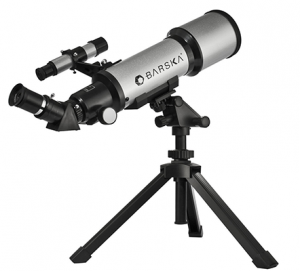
A telescope is obviously one of the most popular pieces of equipment among astronomers, indeed for anyone who loves to explore space. During the holidays, the equipment is put to use since the kids are at home and it’s a great time to get them involved in using it. . It is a gateway to the wonders of the universe and it offers extreme fun and enjoyment. However, in spite of the fun that the telescope offers, it is not possible to find a perfect telescope just as it is hard to find a perfect car. Ensure you choose your telescope based on your budget, lifestyle, and observing interests. Most of the best telescopes for starters cost an average price of $400, but you can also find a superb one at exactly or under $260.
You are given a guide here so that you may make a good choice for your first telescope that will give you the view that you need of the universe. You have an idea of what to look out for, and hence it is advisable not to purchase in haste. The telescope you need should have two basic essentials: a smooth working mount, steady, and one of high quality. It is important to note that a bigger telescope is easier and enjoyable than a smaller one. However, do not overlook convenience and portability.
Aperture: An important feature of a telescope

The aperture is a critical feature of a telescope. This is the diameter of the lens or mirror that gathers its light. The aperture is more often than not referred to as the objective. Check the specifications of the telescope near the focuser, on the box or at the front of the tube. The diameter (D) of the aperture will be given in millimeters. The less used measurement is inches. (25.4mm is equal to 1 inch). As a general rule, your telescope should have an aperture that measures 70 mm (2.8 inches) in diameter.
An aperture larger than that will get the finer details of the images that you are trying to view, compared to a smaller one. However, a smaller one can be of perfect use and show you fine details, especially if you are more likely to be in cityscapes when you view. For instance, you can spot dozens of minute details of the galaxy if you have a telescope that has an aperture whose diameter is 80mm. Do not go for a telescope that is advertised through the magnification. Regardless of the darkness or brightness of the skies, a telescope that has a larger aperture is an advantage to the viewer, because it gives better views.
The next important feature of a telescope is the focal length.

Let us assume that you have two telescopes with the same aperture, but which differ in the focal length. It is advisable to choose the one that has a longer focal length since you can magnify objects that you want to view more easily. Another way to put it is to choose a telescope that has a longer focal ratio, focal ratio is simply focal length divided by the measure of the aperture.

